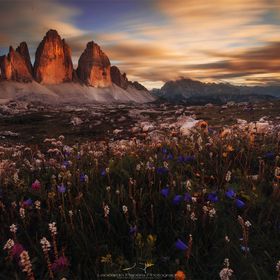

LeonardoPapera
FollowViews
644
Likes
Awards
Lucky 3 Award
Featured
Judge Favorite
Peer Award
Superb Composition
Top Choice
Outstanding Creativity
Absolute Masterpiece
Superior Skill
Jaw Dropping
All Star
Magnificent Capture
Exceptional Contrast
Categories
Same photographer See allBehind The Lens
Discover more photos See all
Behind The Lens
Location
I took this shot in the heart of the Appennini mountains in the centre of Italy, Tuscany precisely. The name of this little lake is Lago Turchino (Turquoise Lake in english) and it's located at 1730m above sea level.Time
The shot was made in the first hours of the night, around 11 p.m. I arrived there at twilight so that I could compose the image better.Lighting
The shot is made from a three different images: one for the tent, one for the rest of the landscape with a more longer exposure and one startrail for the sky!Equipment
At that time I was using a Nikon D5100 with the very good Tokina AT-X 11-16mm f/2.8; of course I used also a tripod (Manfrotto 055 xProb) and a remote shutter (not wireless, cable).Inspiration
I always loved the night sky; at that time I still had an entry level camera and the milky way shots were still a dream, since the ISO capabilities were not that good to capture the milky way. So I tried to "explore" the world of the startrail technique, which requires some practice (like every technique) but it's not that difficult and it allows me to shot at lower ISO and so have a cleaner shot; this is one of the first shots made with that technique and it's still one of the shots I'm most proud of!Editing
In this kind of photos, the post-processing is inevitable: of course, I used a specific software to stack all the shots of the sky (StarStax for Mac) so that I could see the earth rotation through the movement of the stars; then, I enanched through contrast, white balance and saturation the landscape shot and I blended them together!In my camera bag
The things that I always take with me are: (of course) the camera (Nikon D800), my favorite lenses (Nikon 14-24mm f/2.8, Nikon 24-120mm f/4, Sigma 150-500mm f/5-6.3, Nikon 35mm f/2, Nikon 50mm f/1.8), I think this is the best compromise in terms of weight and quality! Sometimes, if I know already what I'm gonna shot, I leave the Sigma at home because it's the heaviest lens in my bag and you can feel the difference if you have to walk some hours! Another fundamental thing for me, it's the tripod: I still have a Manfrotto 055, but I switched from the aluminum one to the carbon fiber one which is way more lighter. Other things in my bag are the remote shutter, and a good set of ND/GND filter: on the field, 99% of the times I use only the ND ones because I prefer to make multiple exposure and then blend them together in Photoshop, but it's just a matter of tastes. Oh, and if I go out in the dark, the torch of course is fundamental!Feedback
To take startrail there are already a lot of guides and tutorial more specific that I could ever be so I won't annoy you with the same boring instructions. The technique is easy: I always set the camera at ISO1600, 30sec and f/2.8; I block the remote shutter so that the camera continues to take shots automatically (of course you have to set it on continuous shutter mode) and I wait! The shots must be made in JPEG because the software won't read the RAW file of the camera, so you need to take the sky photos in JPEG. In my opinion the longer you make the camera shot, the better will be the output shot; so keep in mind that a four hours rotation will be more spectacular than a one hour rotation. The most difficult thing to do is waiting: I always go to shot for the night in some remote places because there will be less light pollution, and often in the mountains (like in this case); well, even if you already know that, in mountain it's cold! So prepare yourself to keep a tent with you or a sleeping bag and to wear a lot of warm clothes because you'll have to stay there some hours standing still, and you will feel the cold inside your bones, trust me.











































